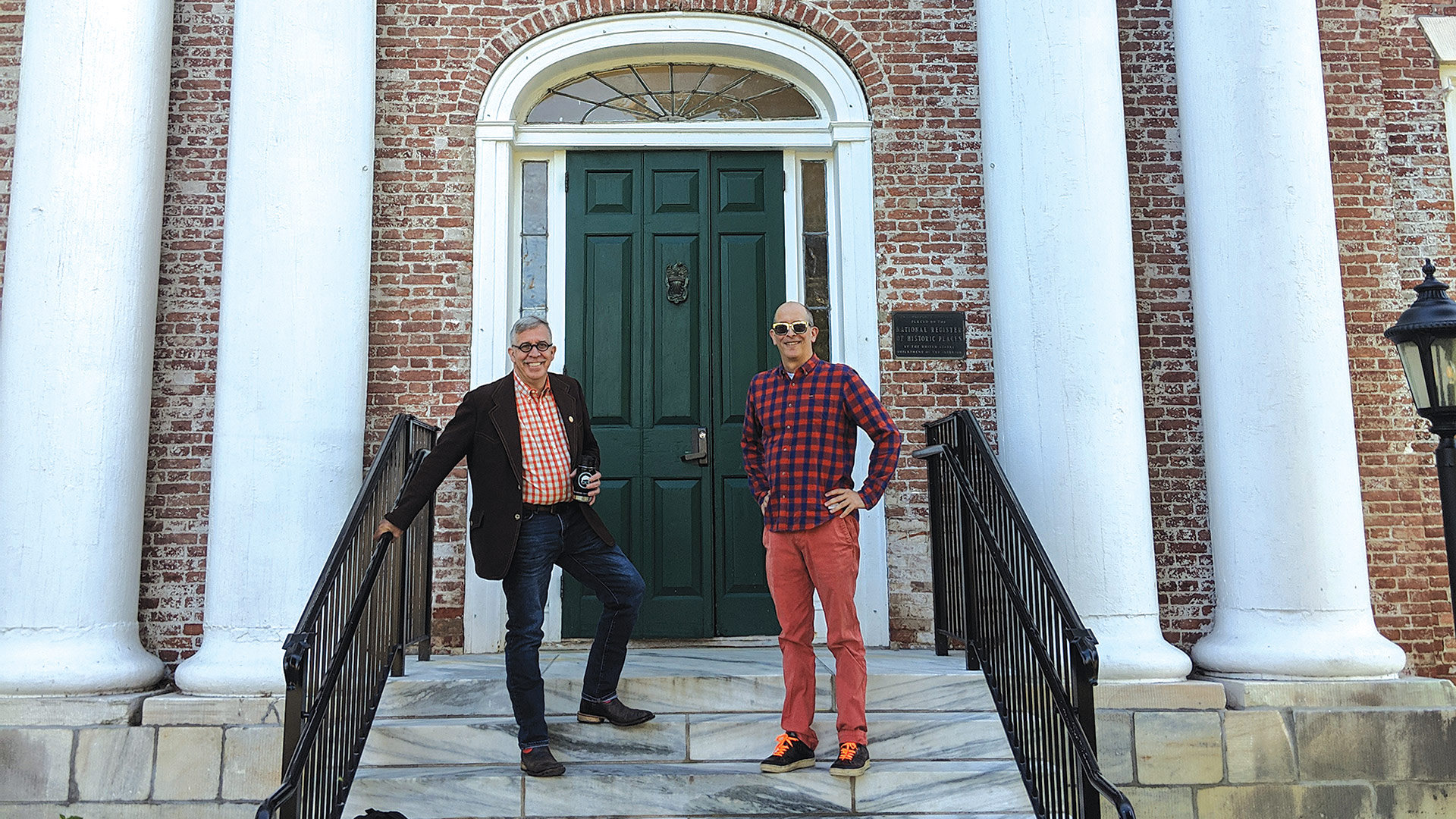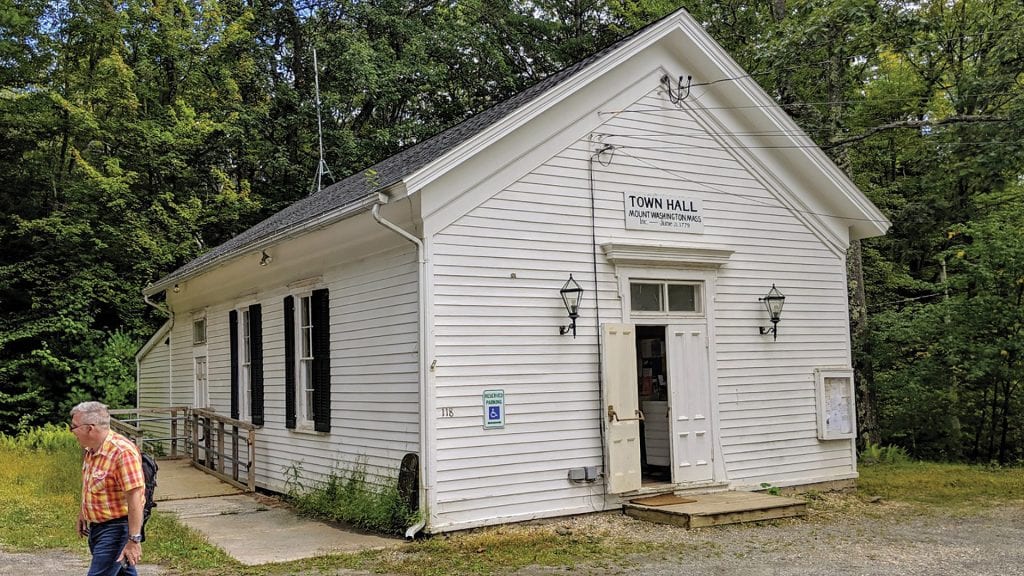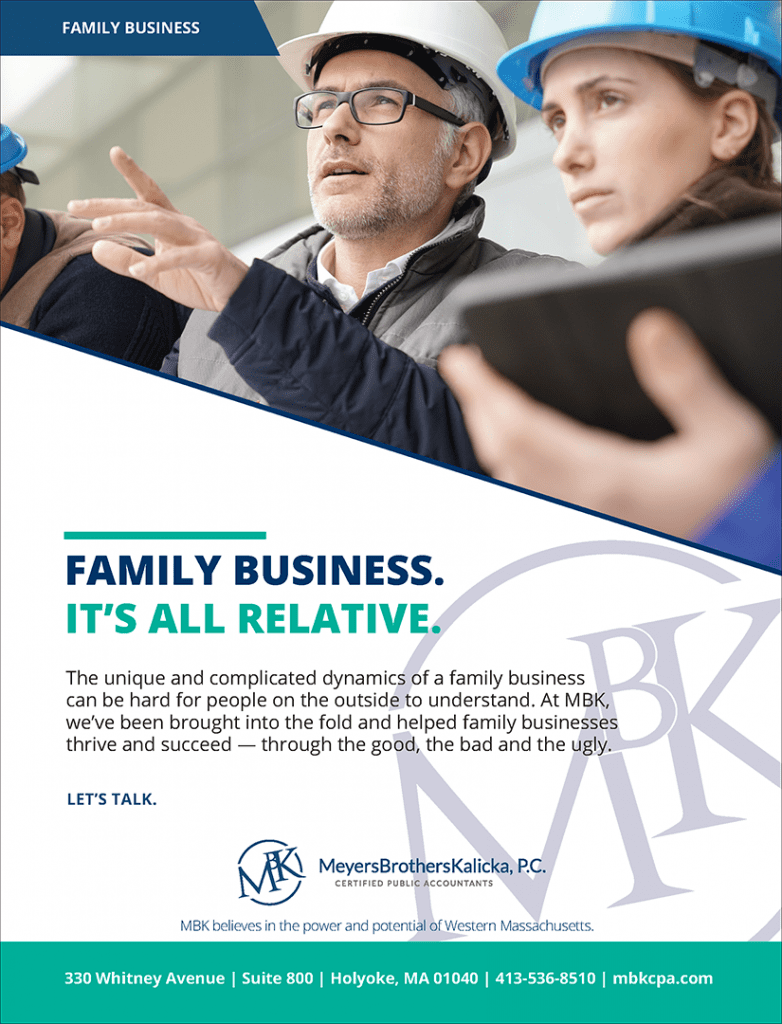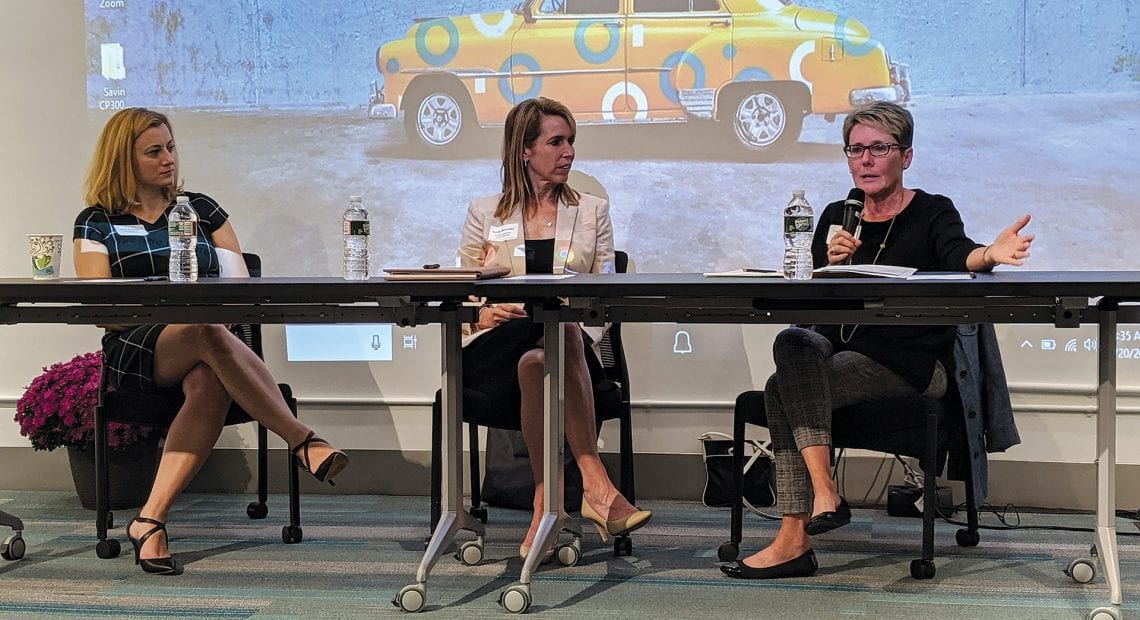Best of Times, Worst of Times
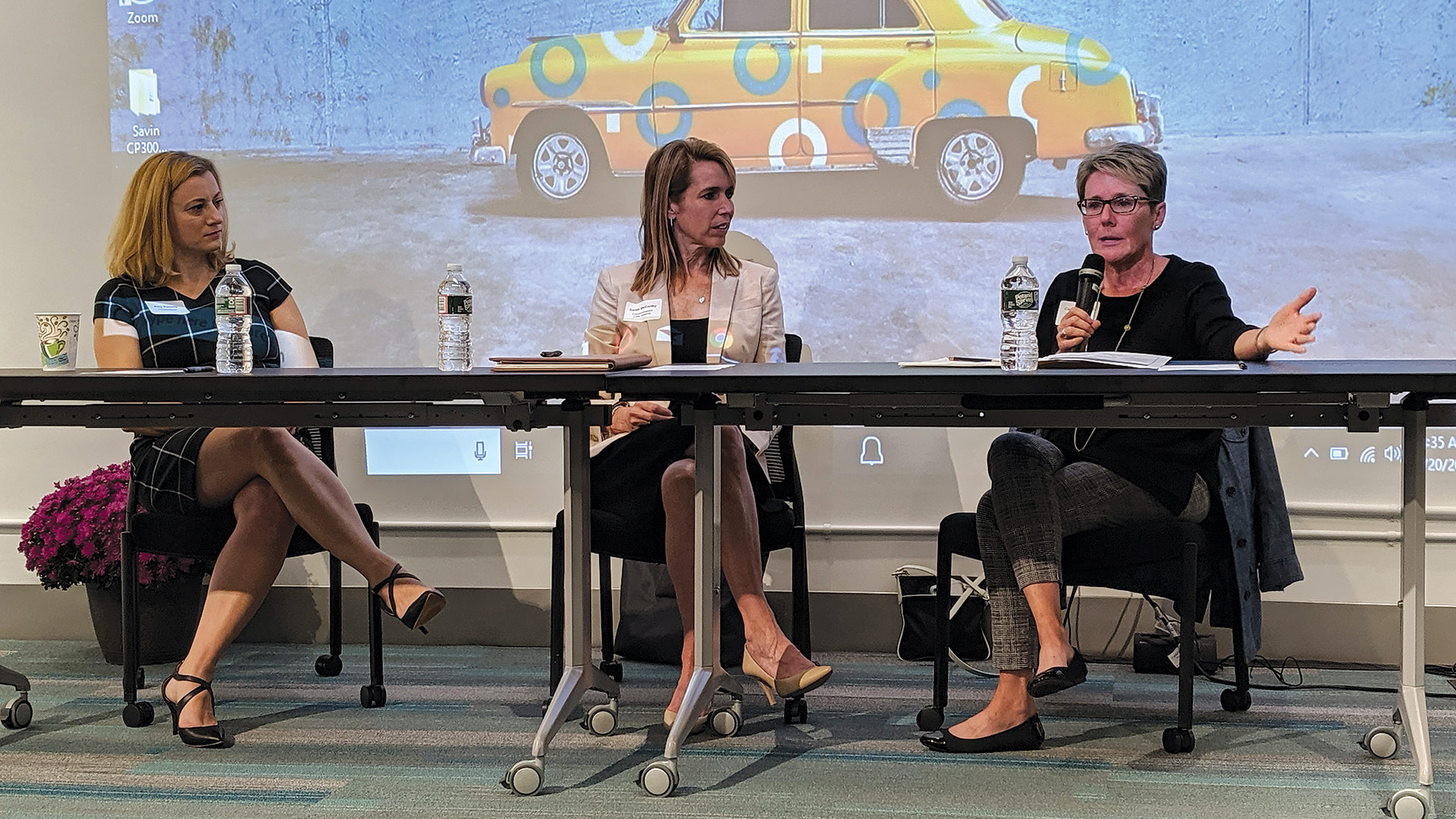
From left, Amy Roberts, Sarah McCarthy, and Carol Fitzgerald discuss why and how recruiting is more difficult in the current economy.
As one of the region’s largest employers, the Center for Human Development is constantly hiring; in fact, it has about 100 job openings right now, said Carol Fitzgerald, vice president of Human Resources.
At a time of low unemployment, CHD isn’t the only company that has to be focused and creative when it comes to filling those open positions.
“I think it’s a candidate’s dream right now,” Fitzgerald said. “We’re finding that people are coming to us with multiple offers. They’re playing the field, trying to figure out who’s going to get them not just the best compensation, but the best schedule, all these extra benefits. And they often don’t decide until the very, very end. Who’s going to win that race?”
Amy Roberts, chief Human Resources officer for PeoplesBank, tells a similar story.
“I’ve never experienced a market where you almost have to aggressively make sure someone shows up for an interview,” she said. “We’re finding, when people are looking, they’re looking in multiple places, so you’re not the only game in town. So we’ve seen an increase in people not showing up to a scheduled meeting.”
Fitzgerald and Roberts detailed the challenges of the current recruiting landscape at a morning-long workshop, titled “Attracting the Best Candidates in Possibly the Worst of Times,” presented on Sept. 20 by Garvey Communication Associates and BusinessWest. Specifically, they took part in a panel of human-resources professionals who explained how the market has shifted and why recruiters have to do things differently than they may be used to in order to land the best talent.
“I think it’s a candidate’s dream right now. We’re finding that people are coming to us with multiple offers. They’re playing the field, trying to figure out who’s going to get them not just the best compensation, but the best schedule, all these extra benefits. And they often don’t decide until the very, very end. Who’s going to win that race?”
“You need to know your market — and we’re in a tough market — and know what your company offers and provides as well as being very focused on the type of individual you want to have work for you,” said Sarah McCarthy, senior Human Resources business partner for Commonwealth Care Alliance, the third member of that panel. “It’s not an environment where people are coming to you; you have to do some mining and find these individuals and encourage them to come work for you, and in doing that, you need to provide context for them — why should they want to come work for you?”

In short, companies need to sell themselves — and their company culture — to job seekers more aggressively than ever before, said John Garvey, president of GCAi, adding that this doesn’t mean catering to stereotypes about young professionals.
“For a while, we heard, ‘Millennials need nap rooms, they have to play foosball, have dance parties,’ all this crazy stuff. I don’t think any of that is true,” he said. “I think people want to be a part of something they’re passionate about. That’s important. And that requires us to talk to them in different ways and develop talent in different ways — and also to reach out in different ways.”
Baiting the Hook
It also means thinking differently about who the perfect candidate is, said McCarthy, adding that flexibility is key — not only in which skills the job requires up front and which can be trained, but what schedule and work-life balance a talented candidate is looking for.
“How can the work be done?” she went on, noting that not every job needs to be 8 to 5, and many employees have needs when it comes to dropping off or picking up kids or caring for a parent. “As an employer, you’re investing in your employees and looking what their needs are, but also what the organization’s needs are. At the end of the week, is the work getting done?”
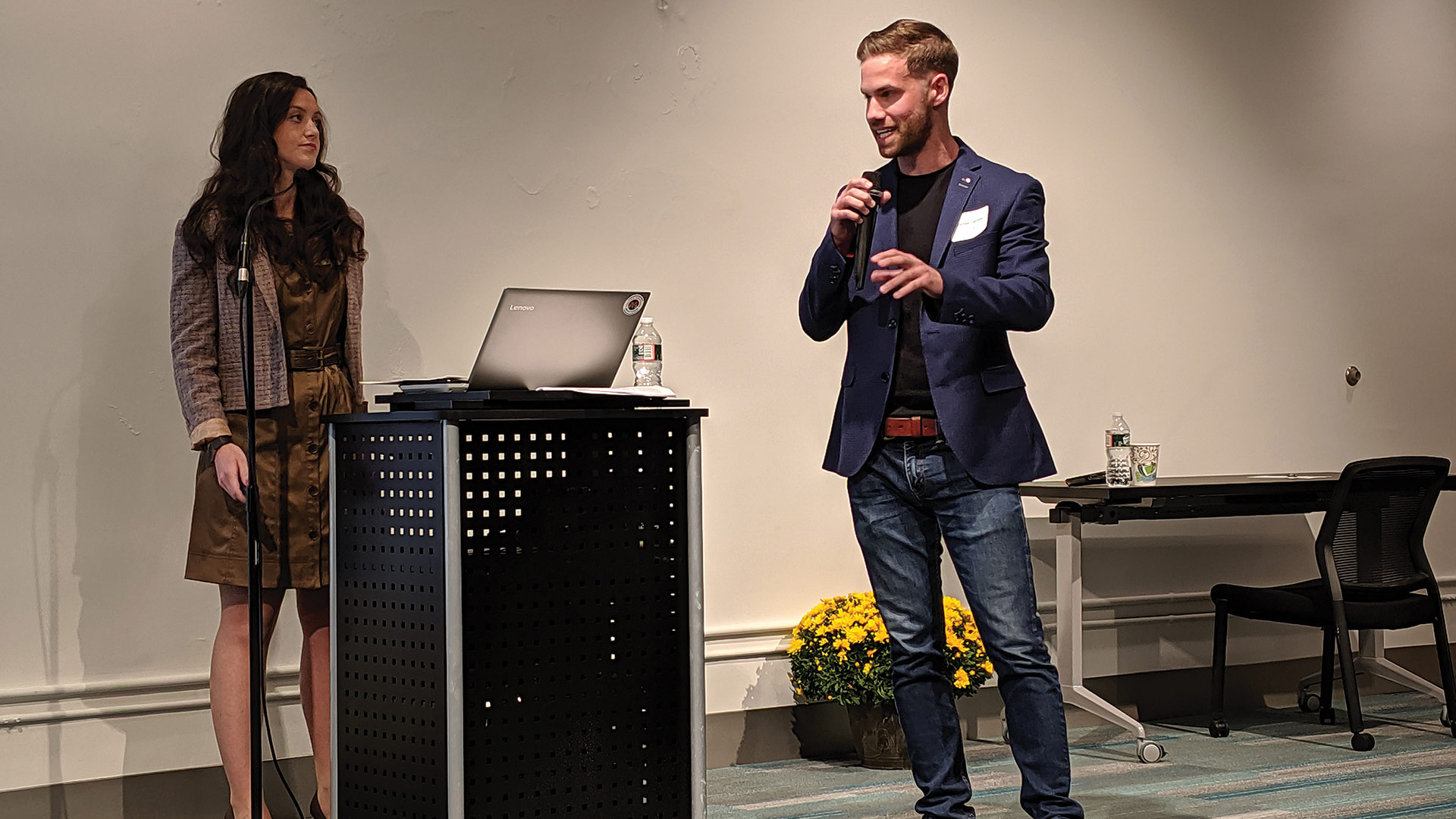
Darcy Fortune and James Garvey say websites, video, and social media are more effective recruiting tools when they clearly showcase a company’s culture.
There was a time when employers had most of the leverage in these situations, but when unemployment is at all-time lows in Massachusetts, that’s no longer the case, which forces companies to think outside the box more than they’re accustomed to.
“You can train for technical skills, but it’s harder to train for what we would call soft skills — somebody who shows up on time and gets along with everybody and their team,” Fitzgerald said. “Those are the things that are harder to find. If you can find that and train up, you broaden the number of candidates you’re able to consider.”
That said, Roberts added, “it really is about getting the right person in the right job, and not getting hung up on the fact that you have so many openings and it’s so difficult to find people that we’re just going to put anyone in the role.”
The goal, then, should be attracting as many qualified candidates to apply as possible. That starts with the posting itself, said Tiffany Appleton, recruiter and director of the Accounting & Finance Division at Johnson & Hill Staffing Services, who gave a separate presentation on the mistakes companies make in their hiring process.
How to Ensure Your Hiring Process Stinks
Tiffany Appleton, recruiter and director of the Accounting & Finance Division at Johnson & Hill Staffing Services, took a tongue-in-cheek approach to effective hiring practices with a list of 10 surefire ways a company can turn its hiring process into a crushing disappointment.
• Write a boring job description. “Just give them the specifics of what they need to have before they walk in the door, and say, ‘if you don’t have these, don’t bother sending your résumé because I’m never going to look at it.’ Just list the facts, and don’t make it sound fun.”
• Take your time reviewing résumés. “Say, ‘some of those look pretty good, but I should wait a few more days because I might get another one that’s even better.’ Candidates love writing off a job, and then you call them a month later and say, ‘we’d like to have you in for an interview.’ That surprise factor is amazing.”
• Save time when you’re scheduling interviews. “Be efficient. E-mail the people you like — ‘I’d like to have you in for an interview; here are the dates and times that are available.’ Let them get back to you and tell you which ones they want. And to make sure you’re saving time, use a form-letter e-mail template.”
• Interviewers should talk only about the job specifics. “They should not talk about anything about the culture of the company, about it being a fun place to work, about any of the growth opportunities that might be available. They should definitely not talk about any fun projects you might get to work on. Just the facts.”
• Take your time after the interview. “You need that time to make sure you’ve arrived at a consensus, that you know who the right people are, and everyone on your team agrees. Candidates really like it when they hear from you weeks after your interview, saying, ‘yeah, we’d like to have you back.’”
• Reach out only to those who made the cut to schedule a second interview. “Don’t worry about those who didn’t make the cut. They’ll figure it out eventually. Don’t waste your time talking to those people. You’d never want them in the future anyway.”
• Make sure the second interview is long and tedious. “Make sure the candidate meets every person they may ever work with in the office in that second interview. Take your time. You need to have that group consensus, remember? Time is on your side.”
• Even if by now you’re feeling confident about whom to hire, be sure to schedule a third interview — or a fourth, or a fifth. “If you want to be sure, you have to ask them every question you’d ever want to know the answer to before you make an offer.”
• When it comes time to make an offer, figure out the lowest possible salary you think will be accepted. “There is no need to waste any money. What is that lowest number they’ll say yes to? What if you start high and they say yes? Why would you do that? They could have said yes to less money.”
• After that offer is accepted, consider your job done. “You don’t need to congratulate them. Don’t say you’re happy they’re joining the team. Don’t give them any guidance. You don’t need to tell them anything. Just assume they’re going to show up. And look at all that time you have to fill that next position!” u
“A job description is that thing you use internally to use as metrics … while a job advertisement is the thing you share with the public that makes them go, ‘wow, that looks amazing; I want it,” she said. “You’re trying to get somebody to read something and go, ‘ooh, that interests me.’”
Later in the morning, GCAi’s James Garvey, digital marketing analyst, and Darcy Fortune, digital public relations analyst, talked about the communication tools companies need to be using when recruiting, including social media, video, and websites that are optimized for mobile devices, because that’s where they’ll reach the most top talent these days. Those channels are also an opportunity to showcase some of that all-important company culture before a candidate ever walks in the door.
“It’s all about the candidate experience now,” Garvey said. “Folks are comparing you to your competition, and they’re going to think about how the process of applying for this position makes them feel. If you can use that as a competitive advantage, that’s a significant opportunity.”
Companies can express a concern for culture in many ways, some as simple as providing employees with breakfast, something Commonwealth Care Alliance does, McCarthy said. “I can’t tell you what a difference that’s made in our organization, especially for young professionals entering the market who don’t have a lot of money.”
Or, it can be expressed in the way a new hire is treated, Roberts said, noting that PeoplesBank sends its new hires a package from Edible Arrangements — a simple gesture that can resonate right off the bat.
“It’s amazing how many people will come in their first day and say, ‘oh my gosh, I got the gift, thank you.’ They just appreciate it — and the other side of it is, their family sees that,” she said. “We’re setting that standard right out of the gate that now they’re part of an organization that cares about them and wants to make them feel welcome.”
Reeling Them In
That’s especially crucial when the job market is so tight for employers that there’s no guarantee someone even shows up after accepting a position, if they find something they like better in the interim.
“I hope they show up,” Roberts said. “Most times they do, but it’s definitely a unique thing I haven’t experienced in my career in HR and recruiting.”
Fitzgerald said it’s no longer enough to post a job and watch the résumés pour in; now companies have to actively court the candidates they prefer.
“The biggest challenge for us is to get the managers to realize it’s not about them anymore,” she said. “We’re trying to tell them, ‘you have to respond within 24 hours to something, or else you’re absolutely going to lose people.’”
It’s a speed game these days, she added, one in which candidates are in effect interviewing companies, seeking the best fit for them of perhaps multiple offers.
Recruiters have to keep in contact and keep top candidates engaged even after coming to an agreement, McCarthy added. “You can’t just make a job offer and walk away now. It’s about the engagement after they’ve accepted.”
That engagement doesn’t end after the first day on the job, she added. “Now the burden is on the organization — now that they’re an employee, how are you going to retain them? Which is very different than a few years ago, when there was a surplus of candidates, and we were hiring and just waiting a month or two, before they came to orientation, to engage them.
Employers that take these steps stand the best chance of landing their top choice to fill a position, rather than just securing warm bodies, Roberts added. “It’s about focusing your attention instead of posting and praying and then deciding 30 days later you have to have that dialogue because it just didn’t work the way you hoped it would.”
And if a top candidate turns a job down? It’s OK to ask why — and learn from the rejection, Fitzgerald said.
“What we’re trying to find out is, what’s the differentiation between us and anywhere else? Sometimes it’s about salary, but mostly it’s about their experience, and it’s really about culture. So we’re really trying to look at total rewards in a way that speaks to individual employees.”
In addition, parting on good terms may lead to a change of heart down the road.
“We want them to have a good experience with us so we can make that next connection. It’s about long-term connections with people,” she went on. “Our managers may be mad they didn’t take our offer, but it’s OK. Maybe it’s not the time now for CHD, but there will be a time when this will work out, or we might have a different opportunity. So let’s stay in touch.”
In a morning filled with stark reality checks and myriad good ideas for facing that new reality, Fitzgerald acknowledged that her own job has become more critical than ever — and her fellow panelists agreed.
“Certainly,” she said, “it’s job security for all of us.”
Joseph Bednar can be reached at [email protected]




